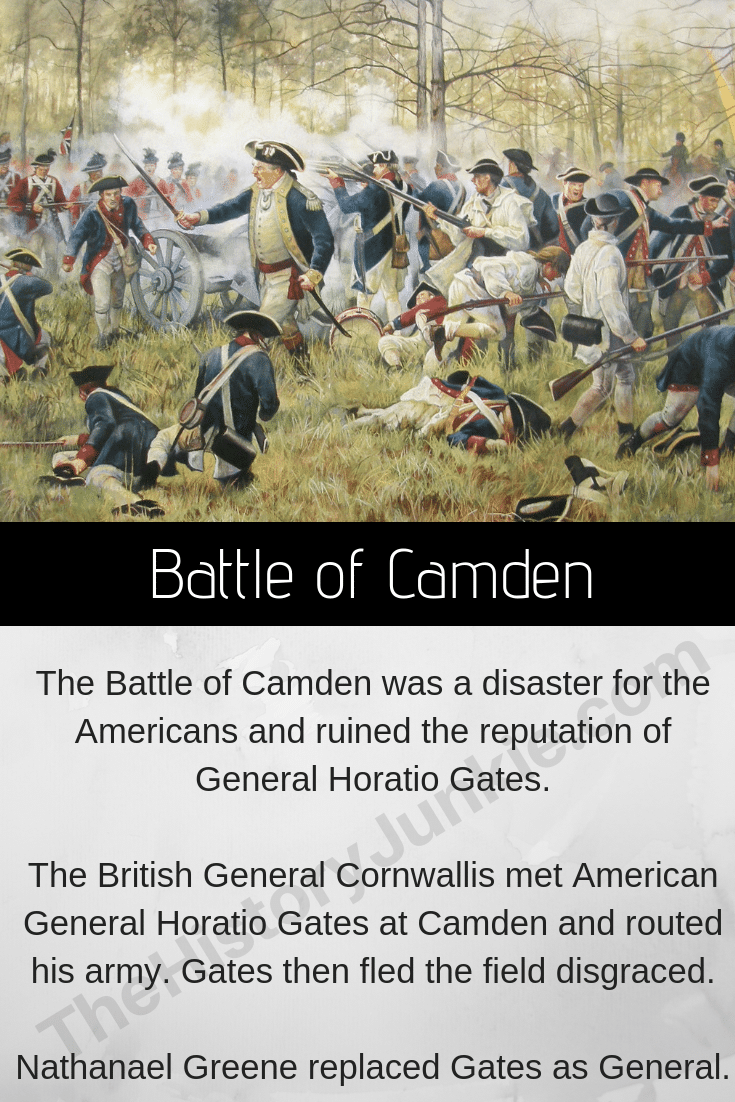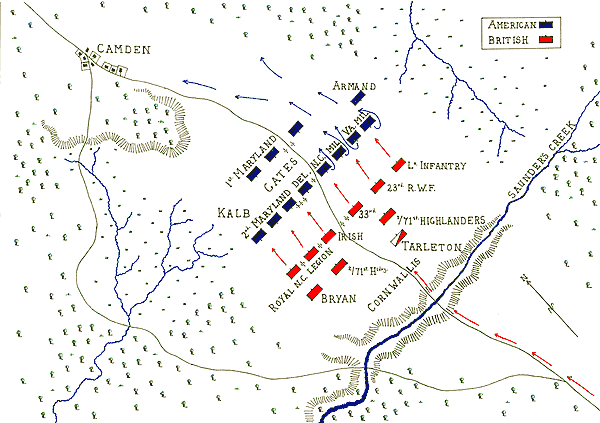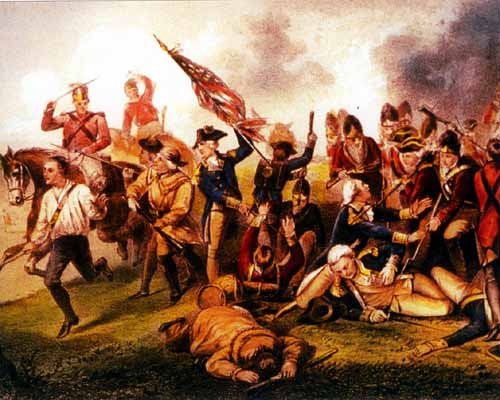The Battle of Camden took place in South Carolina colony and was a disaster. When confronted by the British regulars the Continental militia fled and General Horatio Gates fled as well.

The Continental Army was dishonored and looked to be heading towards obliteration until George Washington was finally allowed to put his man in charge.
Although Camden was a disaster it would become a turning point for the Americans. General George Washington sent in Nathanael Greene to lead the battered troops.
Under Greene's leadership, the Americans would corner Cornwallis in Yorktown.
Against the wishes of General George Washington, Congress appoints the hero of Saratoga, General Horatio Gates. The Continental Army was in shambles when Gates arrived.
Charleston had just fallen to the British and many men were lost in the massacre of Waxhaws. Morale was low and the army had a hard time feeding himself.
Despite the morale, Gates marched towards Camden, confident of victory. He believed that only 700 men held Camden and that he could overwhelm them with his Southern Army. Although Gates's numbers were higher than the British, his army was composed mostly of the militia.
Militia had repeatedly shown themselves as weak in the face of British regulars, but Gates ignores this and continues on. He also weakens his forces by sending some of these men on insignificant missions.
Once at Camden, Gates quickly learned that Cornwallis was ready. However, he believed that he was too close to retreat and ready for battle.
British Perspective
The siege of Charleston had just ended with General Benjamin Lincoln surrendering 6,684 soldiers to the British.
Once Charleston was secured Clinton placed General Cornwallis in command of the southern army with orders to take control of the Carolinas while maintaining a firm grasp on the port cities of Savannah and Charleston and then go ahead to Virginia.
Cornwallis' interior garrison in the small but strategic city of Camden. While in Charleston Cornwallis learned that Gates was on his way to Camden and proceeded to make a night march towards Camden in an attempt to position his troops for Gates in the morning.
However, the march halted when his cavalry engaged the head of Gates' army.
Fighting
Cornwallis formed his men before dawn on both sides of Waxhaws Road. He placed his élite troops on the right-wing which was the British position of honor.
The left-wing was under Lord Rawdon who commanded a force composed of his own Irish Volunteers, infantry from the British Legion, the Royal North Carolina Regiment and Morgan Bryan's North Carolina militia.
Banastre Tarleton and his Green Dragoons were placed in reserve. In the center of the line was four pieces of artillery.
General Horatio Gates organized his army in a similar fashion to Cornwallis. On his right-wing were his best troops under the command of General Baron Jean de Kalb. There were three small Maryland regiments in reserve.
Gates joined them there which was a critical mistake because it limited his communication since he was too far back in the rear. His left-wing was 2,500 strong, with a small part of cavalry and other light infantry behind them.
This was a critical error because this wing was all composed of untried militia which would face off against Cornwallis' right wing which consisted of his best troops.
Cornwallis advanced his right-wing into Gates' left. The finest men in his army rushed forward with great courage to meet the Americans.
All American militia except for one fled without firing a single shot which resulted in the entire left-wing collapsing.
On the other side, General de Kalb put up a fierce defense against the advancements of Lord Rawdon's men.
They were able to push the men back after a serious attack that resulted in Cornwallis himself riding into the field and steadying the men. de Kalb fought valiantly but never stood a chance after the collapse of the right-wing.
General Horatio Gates had already fled the field when a steadied British force pinned he and his Continentals and Cornwallis launched Tarleton in to finish the Americans off.
The battle was over, Gates was dishonored and the American had lost one of its best field commanders in De Kalb.
Outcome
After the battle of Camden was finished the American morale in the south was at an all-time low.
The British were in control of the North Carolina, South Carolina, and Georgia. However, the battle had an unintended consequence in favor of the Americans.
Horatio Gates had proven that he was an incompetent field commander he was dishonored and would no longer hold a position in the American army.
The Continental Congress now allowed Washington to choose his commander of the Southern army. His choice would change the course of the war. He would choose General Nathanael Greene.


